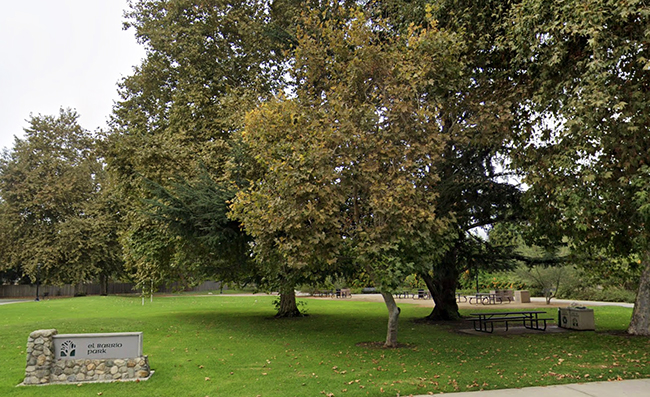Readers comments 12-11-20
Crushing small businesses
Dear editor:
Banning outdoor dining at restaurants operating responsibly and following published guidelines makes no sense. Forcing closure of barber shops and hair salons that follow CDC guidelines makes no sense. There is no scientific evidence that an increased number of COVID-19 cases are the result of these or other small businesses operating responsibly according to CDC guidelines, remaining open. Massive numbers of small businesses are dying while Wal-Mart, Lowes, Home Depot, Costco and other large stores are allowed to remain open. Is wandering the aisles of a crowded big box store safer than getting a haircut at a barbershop that allows one customer to enter at a time? Is standing in line six feet from others waiting to get into Target safer than dining outdoors six feet from others?
So, I am writing in support of those restaurants and other responsible small businesses who would defy the authority of the government to put them out of business when there is no scientific proof the restrictions have much chance of reaching any positive result.
Jack Sultze
Claremont
Restaurant petition
Dear editor:
In an article entitled “Claremont restaurants band together opposing dining ban” (COURIER, November 27, pages 2-3), your reporter Mr Felschundneff stated, “Ms. Salazar will now take her advocacy to the people of Claremont with an online petition asking that area restaurants remain open. The COURIER will publish links to that petition when it goes live.” Reader Brian Davidson in a Readers Comment in the next issue (December 4, page 5) noted, “I am disappointed by the fact that a large number of Claremont restaurants are actively defying the county’s public health orders—so far with impunity, and with the tacit support of the Claremont COURIER, which has pledged to publicize their petition.” An editor’s note appended to Mr. Davidson’s letter claims, finally, that “The COURIER also has not ‘pledged to publicize’ any restaurant petition or any particular point of view in our news coverage.”
In light of this record, the COURIER owes its readership a whole round of apologies. One, to its readers, for pledging to publicize the petition. Another, also to its readers, for lying, Trump-like, about the facts. And a third, to Mr Davidson, for traducing his command of the English language.
Charles Young
Claremont CA 91711
[Editor’s note: With the outdoor dining ban ruled illegal this week by a judge, this story has changed considerably. We try and explain it all. Please see My Side of the Line on page two. —PW]
Village Dance Arts
Dear editor:
Though I thoroughly enjoyed the cover of the Courier last week, November 27, I was disappointed that neither the location, nor the small business name was stated. Village Dance Arts is the oldest, and now the only, school of dance in Claremont. They offer tap, jazz, modern, hip hop, musical theater, jazz funk, the Royal Academy of Dance ballet curriculum, and of course, as we saw, Taiko drumming. Ms. Toni Carrión purchased it from Mr. Charles Chase in 1969, and it is a part of our rich Claremont history and I believe that should have been mentioned, especially during such difficult times.
Karen Pielke
Claremont
COVID-19 and the colleges
Dear editor:
This subject is particularly relevant to the Claremont Colleges as small liberal arts colleges that advocate for the arts and humanities. COVID-19 has not only forced us to shut down our campuses, it has posed an existential challenge to the purpose of a residential liberal arts education. Our reason for being has been called into question, as COVID-19 lockdowns have compelled us to resort to universal online teaching. As of yet, we are uncertain whether this will continue in spring 2021.
Presently, the humanities face an even graver crisis. Already weakened in recent years from hemorrhaging majors as a result of student and parent concerns about practicality, the humanities have yet to present a fresh argument for their customary intellectual preeminence in higher education. Now, COVID-19 quarantine has forced the issue of rationale.
I propose that community engagement may represent a potential course for the Humanities.
Hao Huang
Scripps College
Future of La Puerta
Dear City Councilmembers and
City Manager:
The City of Claremont entered into a 99-year lease of a section of the La Puerta property with the Claremont Unified School District on January 23, 1979, which will not expire until the year 2078. Notably, there is an exit clause which states: “This agreement shall be for a 99-year period commencing February 1, 1979 and extending to and including January 31, 2078 except that after fifteen years the Board of Education of the district may require that all or part of the subject property be returned to the district upon two years advance notice if enrollment increases necessitate the use of the property by the district for school facilities. This agreement may also be terminated if the city no longer wishes to use said property upon one year’s notice by the city to district.”
Because an educational requirement for school facilities is a stated legal requirement for Claremont Unified School District to initiate termination of the lease, and Claremont Unified School District has declared the property as being “surplus,” thus confirming, de facto, that CUSD has no existing or future educational requirement for the property, the district can, henceforth, no longer terminate the La Puerta lease. Consequently, only the city of Claremont can terminate this invaluable lease.
The future availability of La Puerta conclusively is entirely up to this city council. The current developer wishes to convince the city of Claremont, through various forms of payment, which some have referred to as insidious bribes, to terminate the lease to make available to the developer a portion of the La Puerta Sports Field so the developer’s project would be profitable. 1 would urge you not to sell out on the citizens of this city and surrender or exit the 99-year lease, which the city entered into for the continuous good of this community. The field has been developed, upgraded, and maintained over the past 41 years at enormous expense to the city. In the city’s planner’s own words, “Staff also notes that one of the most desirable features of La Puerta Sports Park is the turf and topsoil, which required several years of work and a substantial investment on the part of the city to obtain. The specific soil conditions at La Puerta make this park more enjoyable and desirable when compared to other parks in Claremont. and La Puerta is always in high demand for league play. With this in mind. City staff recommends that your grading plan be revised to leave the park in its current condition…”
City councilmembers, the fate of La Puerta is completely up to you! Claremont residents need to be informed and educated about this fact. 1 would urge you not to allow the removal of any part of the sports park property from the use of our citizens, and, most importantly, do not break the existing 99-year lease that has benefited so many generations of children in the past and still to come. If, in fact, the city undertook the 99-year lease in good faith, then there is insufficient land available for the developer to develop. Therefore, further discussions with the developer are costly, futile and senseless and detrimental and need to be terminated. City operation of the La Puerta Sports Park would then continue for the remaining period of the lease.
You have no requirement whatsoever to continue discussions with the developer about the sports park. Would you please advise of your intent?
Kathryn Flynn
Claremont
Is College Worth It?
Dear editor:
Higher education is really expensive. According to the College Board, the average annual tuition for public in-state colleges is over $20,000, while tuition for private four-year colleges is more than double that. Today, about 45 million Americans collectively owe more than $1.6 trillion in student debt. In a world where unskilled jobs are rapidly being replaced by automation, many high school graduates are left with a tough question. Is the benefit of going to college worth the cost?
There is a concept that is taught in every freshman economics course called opportunity cost which states that rational consumers make decisions based on their alternatives. Nowadays, prospective students have many cheaper alternatives to traditional four-year universities. Community colleges and correspondence schools offer tuition at a fraction of the cost of conventional higher education. However, choosing to go with a more budget-friendly educational alternative is far from a cinch. The atmosphere at a typical community college is often described as depressing. Moreover, while the cost of tuition is significantly lower, students who complete a program at a community college tend to earn lower salaries than graduates of four-year colleges.
I don’t think obtaining a college degree is for everyone. There are plenty of ways to be a productive citizen without attending an overpriced educational institution. Electricians, sales representatives, and plumbers are just a handful of professions that pay well and only require a high school diploma. Whether college is worth the lofty price tag depends on both the individual and the school. But in today’s world, it’s more difficult than ever to make the right decision on higher education—especially because many colleges are now only offering online classes in light of the ongoing pandemic. Nevertheless, despite all the drawbacks, I believe upcoming high school graduates should put a stronger weight on the benefits of continuing education than the tuition expense if college is something they can afford. Just as Benjamin Franklin once said, “an investment in knowledge pays the best interest.”
William Zhou
Mr. Zhou is currently a student at
Claremont McKenna College








0 Comments